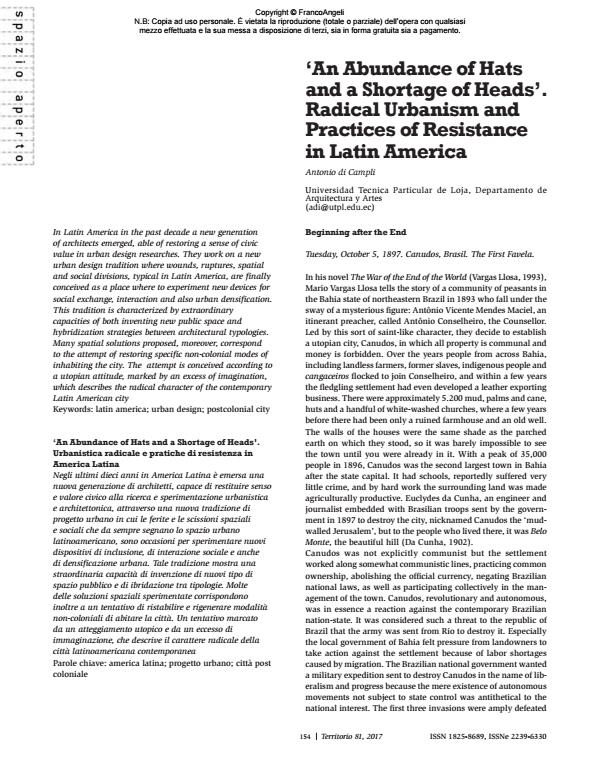‘An Abundance of Hats and a Shortage of Heads’. Radical Urbanism and Practices of Resistance in Latin America
Journal title TERRITORIO
Author/s Antonio Di Campli
Publishing Year 2017 Issue 2017/81
Language English Pages 8 P. 154-161 File size 1328 KB
DOI 10.3280/TR2017-081030
DOI is like a bar code for intellectual property: to have more infomation
click here
Below, you can see the article first page
If you want to buy this article in PDF format, you can do it, following the instructions to buy download credits

FrancoAngeli is member of Publishers International Linking Association, Inc (PILA), a not-for-profit association which run the CrossRef service enabling links to and from online scholarly content.
In Latin America in the past decade a new generation of architects emerged, able of restoring a sense of civic value in urban design researches. They work on a new urban design tradition where wounds, ruptures, spatial and social divisions, typical in Latin America, are finally conceived as a place where to experiment new devices for social exchange, interaction and also urban densification. This tradition is characterized by extraordinary capacities of both inventing new public space and hybridization strategies between architectural typologies. Many spatial solutions proposed, moreover, correspond to the attempt of restoring specific non-colonial modes of inhabiting the city. The attempt is conceived according to a utopian attitude, marked by an excess of imagination, which describes the radical character of the contemporary Latin American city
Keywords: Latin america; urban design; postcolonial city
Antonio Di Campli, ‘An Abundance of Hats and a Shortage of Heads’. Radical Urbanism and Practices of Resistance in Latin America in "TERRITORIO" 81/2017, pp 154-161, DOI: 10.3280/TR2017-081030